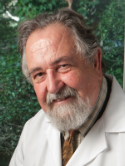| Abstract: |
The standardized uptake value (SUV) is the most commonly used parameter to quantify the intensity of radiotracer uptake in tumors. Previous studies suggested that measurements of 18F-FDG accumulation in tissue might be affected by the image reconstruction method, but the clinical relevance of these findings has not been assessed. Methods: Phantom studies were performed and clinical whole-body 18F-FDG PET images of 85 cancer patients were analyzed. All images were reconstructed using either filtered backprojection (FBP) with measured attenuation correction (MAC) or iterative reconstruction (IR) with segmented attenuation correction (SAC). In a subset of 15 patients, images were reconstructed using all 4 combinations of IR+SAC, IR+MAC, FBP+SAC, and FBP+MAC. For phantom studies, a sphere containing 18F-FDG was placed in a water-filled cylinder and the activity concentration of that sphere was measured in FBP and IR reconstructed images using all 4 combinations. Clinical studies were displayed simultaneously and identical regions of interest (ROIs, 50 pixels) were placed in liver, urinary bladder, and tumor tissue in both image sets. SUV max (maximal counts per pixel in ROI) and SUV avg (average counts per pixel) were measured. Results: In phantom studies, measurements from FBP images underestimated the true activity concentration to a greater degree than those from IR images (20% vs. 5% underestimation). In patient studies, SUV derived from FBP images were consistently lower than those from IR images in both normal and tumor tissue: Tumor SUV max with IR+SAC was 9.6 ± 4.5, with IR+MAC it was 7.7 ± 3.5, with FBP+MAC it was 6.9 ± 3.0, and with FBP+SAC it was 8.6 ± 4.1 (all P < 0.01 vs. IR+SAC). Compared with IR+SAC, SUV from FBP+MAC images were 25%-30% lower. Similar discrepancies were noted for liver and bladder. Discrepancies between measurements became more apparent with increasing 18F-FDG concentration in tissue. Conclusion: SUV measurements in whole-body PET studies are affected by the applied methods for both image reconstruction and attenuation correction. This should be considered when serial PET studies are done in cancer patients. Moreover, if SUV is used for tissue characterization, different cutoff values should be applied, depending on the chosen method for image reconstruction and attenuation correction. |







